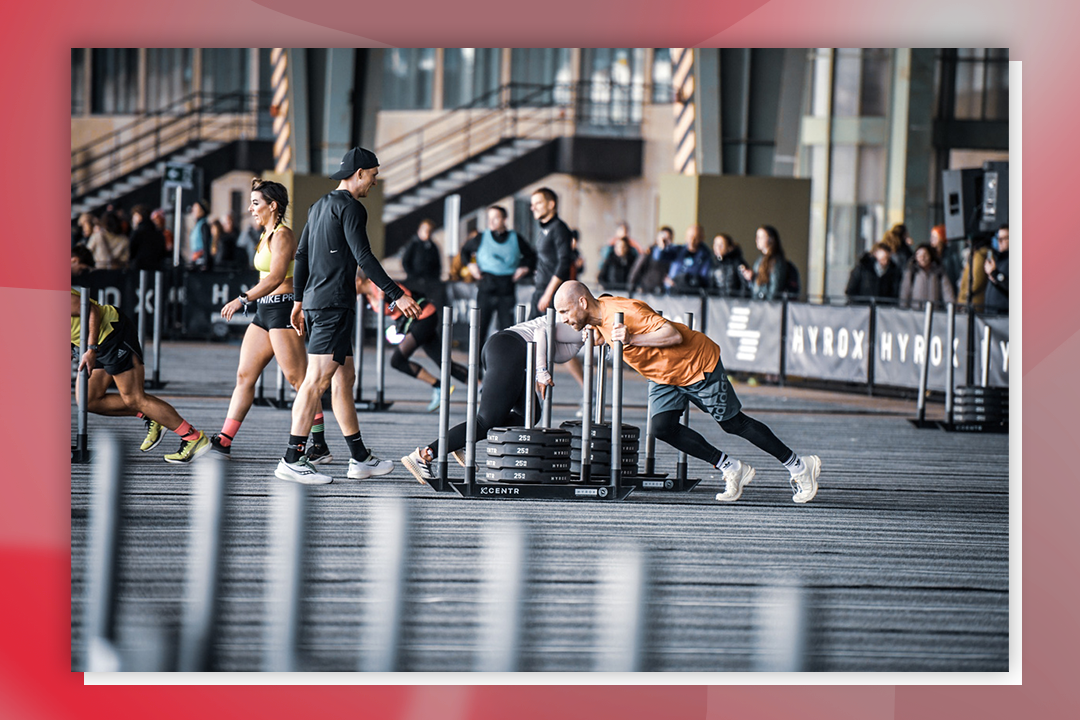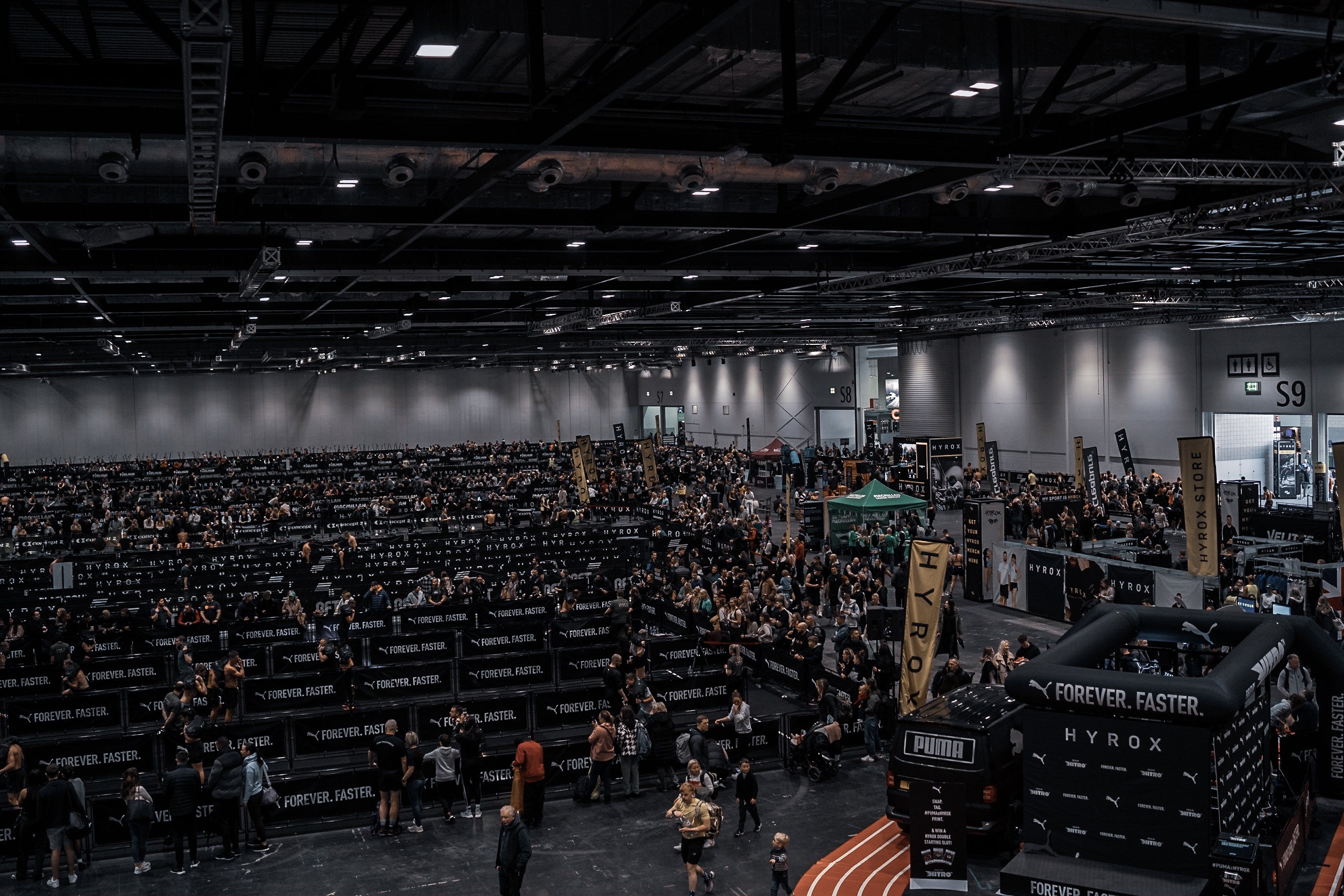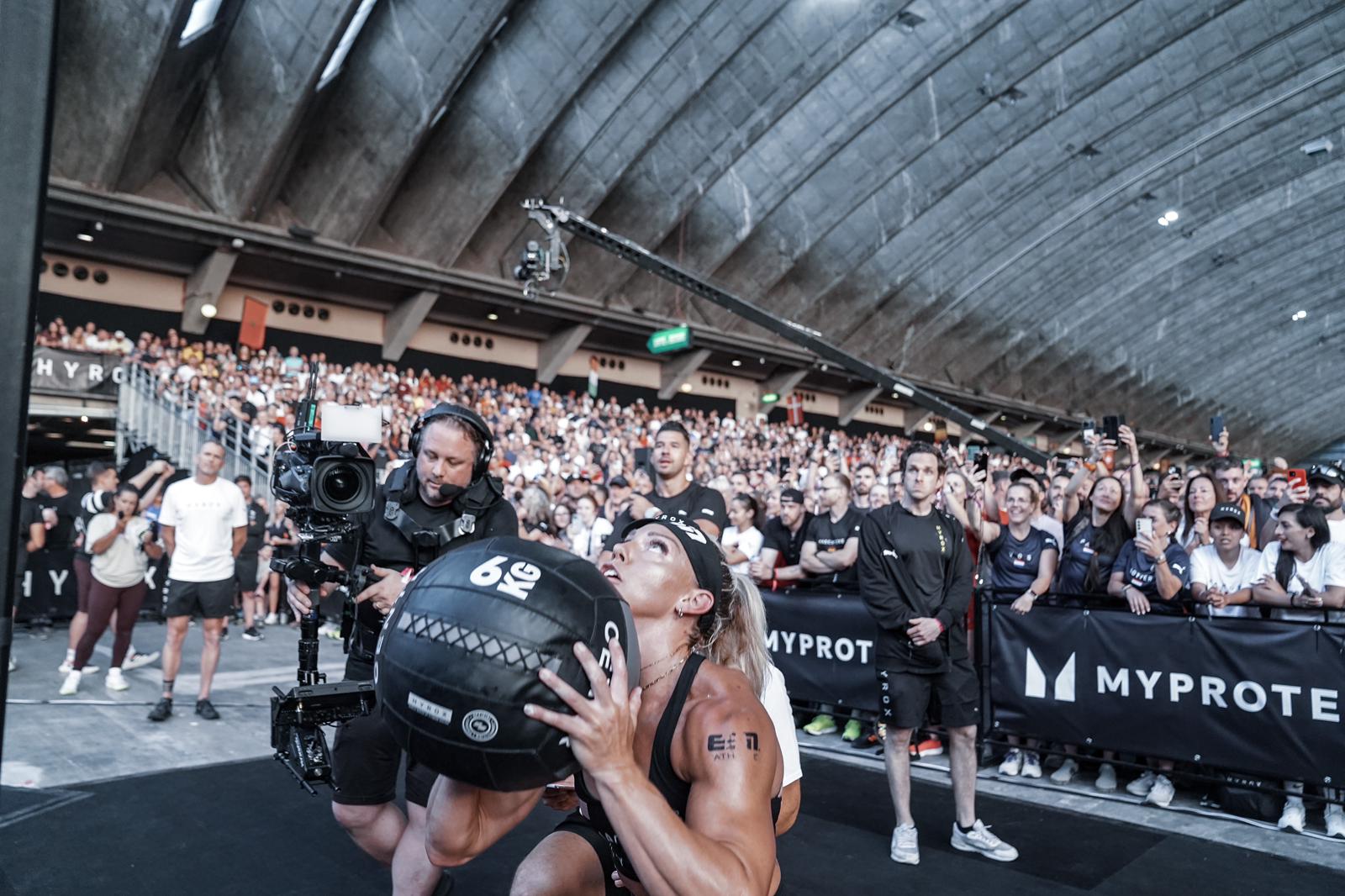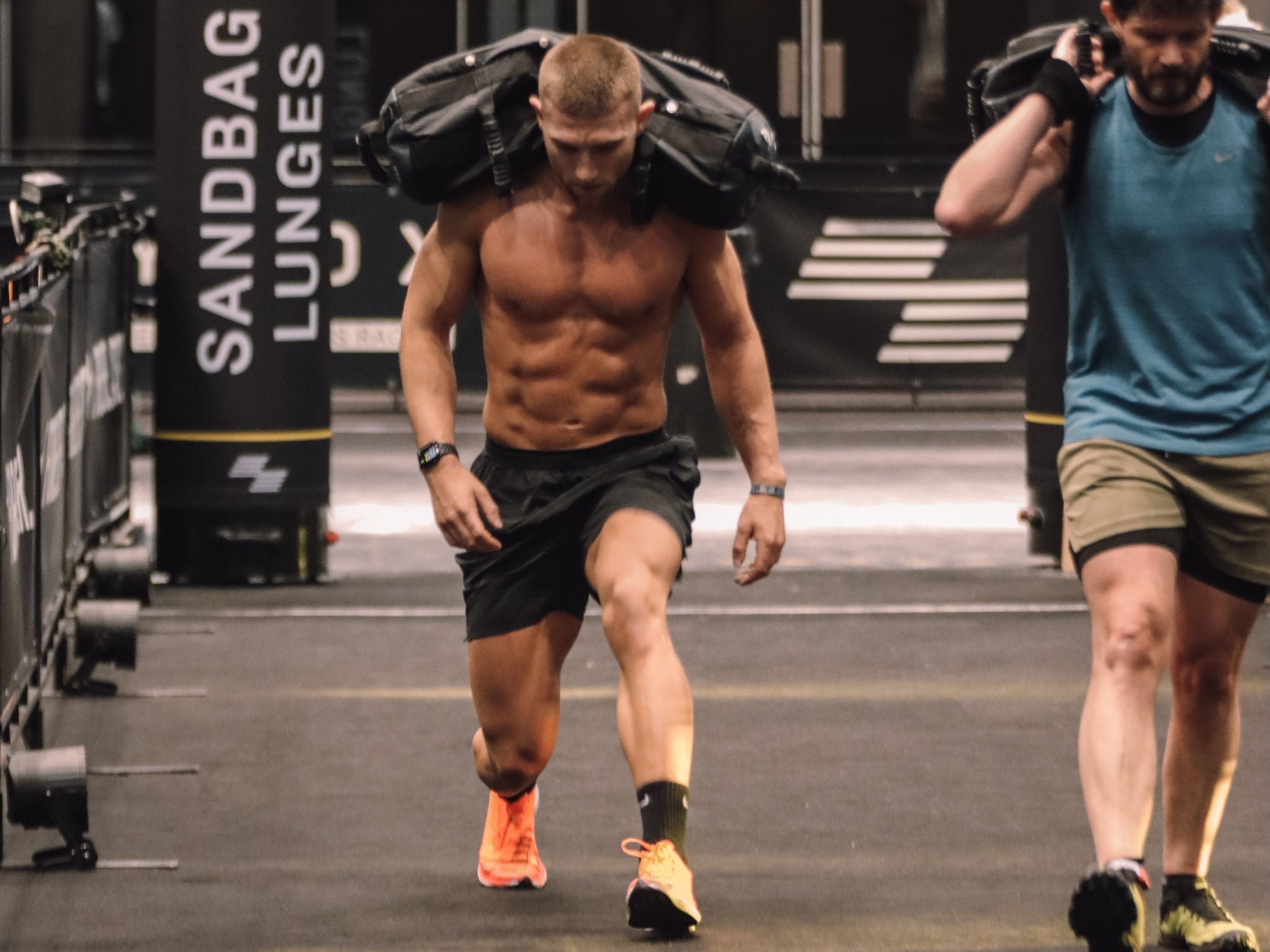Three unexpected exercises you need to add into your Hyrox training plan, according to an expert
Weave this trio into your Hyrox workouts if you want a new PB

Your support helps us to tell the story
This election is still a dead heat, according to most polls. In a fight with such wafer-thin margins, we need reporters on the ground talking to the people Trump and Harris are courting. Your support allows us to keep sending journalists to the story.
The Independent is trusted by 27 million Americans from across the entire political spectrum every month. Unlike many other quality news outlets, we choose not to lock you out of our reporting and analysis with paywalls. But quality journalism must still be paid for.
Help us keep bring these critical stories to light. Your support makes all the difference.
How do you train for a Hyrox race? Running is a given, and it pays to be proficient at the other eight featured exercises too. But a top trainer and athlete says there are three further movements that should be “non-negotiables” in your Hyrox preparations.
The squat, push press and reverse lunge could hold the key to a faster time, according to Hyrox UK master trainer and Represent 247 athlete Jake Dearden. And with his own PB being an enviable 56min 53sec, he clearly knows what he’s talking about.
Dearden reckons this trio can unleash your athletic potential by improving your movement quality while developing a strong and powerful pair of legs – pivotal to a speedy set of lunges, sled push or wall balls.
Read on to find out how you can incorporate each exercise into your Hyrox preparations. Then, when race day finally rolls around, there should be a PB with your name on it.
Hyrox master trainer Jake Dearden’s three non-negotiable Hyrox training exercises

Squat
Sets: 3 Reps: 5 Tempo: 2010 Rest: 90 seconds
The deadlift may be the king of lifts, but the squat reigns supreme for developing bigger, stronger lower body muscles. There are several different types, from front squats to back squats to the universally despised Bulgarian split squats, but Dearden says it doesn’t matter too much which one you choose as long as you stick to a few simple rules.
“As long as you’re loading it up fairly heavily and focussing on correct technique, it will help,” he says. However, before you do that, Dearden recommends using lighter weights to master the movement.
“If you move well, the load is distributed evenly across the muscles that you’re using,” he says. “For example, when a lot of people do a squat, only their quads will be aching the next day. That’s probably because the quads are overworking and they’re not using their hamstrings and glutes properly. Moving with perfect form holds the body in a better position and allows you to lift more weight. I had to spend about six months learning how to squat properly, and I’ve only just mastered it.”
If you’re in the market for some extra pointers in this area, our guide on how to squat properly can help.
Push press
Sets: 3 Reps: 5 Tempo: 2010 Rest: 90 seconds
Wall balls are the final exercise in a Hyrox race, with athletes facing up to 100 of them. It’s a brutal way to finish, but practising the push press can make this last push that little bit less miserable.
“It helps you develop the explosive push you need for the wall balls,” Dearden explains. “A lot of people, when they do wall balls, will stand up very slowly during the squat portion. But if you do this then you’re basically just using your shoulders to throw the medicine ball upwards.”
The muscles in your shoulders are far smaller and less resistant to fatigue than those in your legs, so you’re better off getting the latter involved if you want to power through your wall balls.
“If you use the push press in your training, you get used to exploding through your legs to help you drive the weight overhead, which is going to help,” Dearden explains.
Reverse lunge
Sets: 3 Reps: 5 Tempo: 2010 Rest: 90 seconds
The sandbag lunge is another of the featured Hyrox exercises, with athletes completing 100m of them while carrying a sandbag weighing 10kg, 20kg or 30kg (depending on the division they’re competing in). But, if you can comfortably lift a much heavier weight, this is going to feel like a breeze. That’s why Dearden likes to include barbell back rack reverse lunges in his pre-Hyrox training plans.
“I think this is really helpful for the sled push, for the lunges themselves, and it’s really good for strengthening the lower body,” he says.

How to use Dearden’s three non-negotiable Hyrox exercises in your training plan
Hyrox training is tricky because you have to balance traditional strength training with a fairly comprehensive running programme and other high-intensity elements. To avoid sending your leg muscles to oblivion, Dearden recommends lifting slightly lighter weights and focussing on power – generating force, fast – when performing the exercises listed above.
To hit this stimulus, he loads up a weight that’s roughly 60-70 per cent of his one-rep max then performs three sets of five repetitions with a slow, two-second eccentric phase (the lowering portion of the lift) and an explosive concentric phase (the lifting section of the exercise). This way, he can still train progressively to build strength and power without his legs feeling like lead weights the following morning.
To put this traing technique into action, pick one of Dearden’s recommended exercises to start your next strength session with, then follow his tempo and weight prescriptions to develop impressive power in your legs and shoulders.
Read more: Hyrox vs CrossFit - which one should syou choose

How many times a week should I run for Hyrox?
“Running is by far the most important exercise to do when preparing for a Hyrox race,” says Meg Jacoby. And as the sport’s 2024 world champion, she should know.
“The best way to improve your running is to train like a runner,” Jacoby adds. “I run six days a week, and that includes long runs, tempo runs, intervals and more.”
However, this is the routine of an elite athlete. For everyday competitors, two runs per week is the minimum effective dose, according to Dearden.
“One of these should be a speed work session, so this might mean running around a track, on a treadmill or doing intervals on the road,” he says. “For this, practise running at a speed that’s faster than your Hyrox pace, or around your 10K PB pace.
“Then the other should be a run at an easy pace where you’re focussing on efficiency and you’re keeping your heart rate nice and low. This would be your classic zone 2 training [where your heart rate stays at roughly 60-70 per cent of its maximum throughout].”
This long run will build a strong aerobic base, improving your body’s ability to take in and use oxygen to fuel you through exercise. It can also develop your work capacity and enhance your running efficiency, Dearden adds.
“You want to do a maximum of one long run a week. If you were to do one a week then you would ideally want to build up to how long you’re going to be working at a Hyrox event.
“Most Hyrox classes last for 60 minutes at most, but if you’re aiming for a Hyrox time of about 90 minutes then you need to practise being able to work fairly hard for that amount of time. I think doing your long run and building it up to this time makes a lot of sense. Then you can work hard for however long you want your Hyrox to be.”
These running sessions should also be balanced with some strength training and Hyrox-specific high-intensity workouts to prepare you for race day. After a few months of slipping these commitments into your exercise schedule, you should be good to go.



